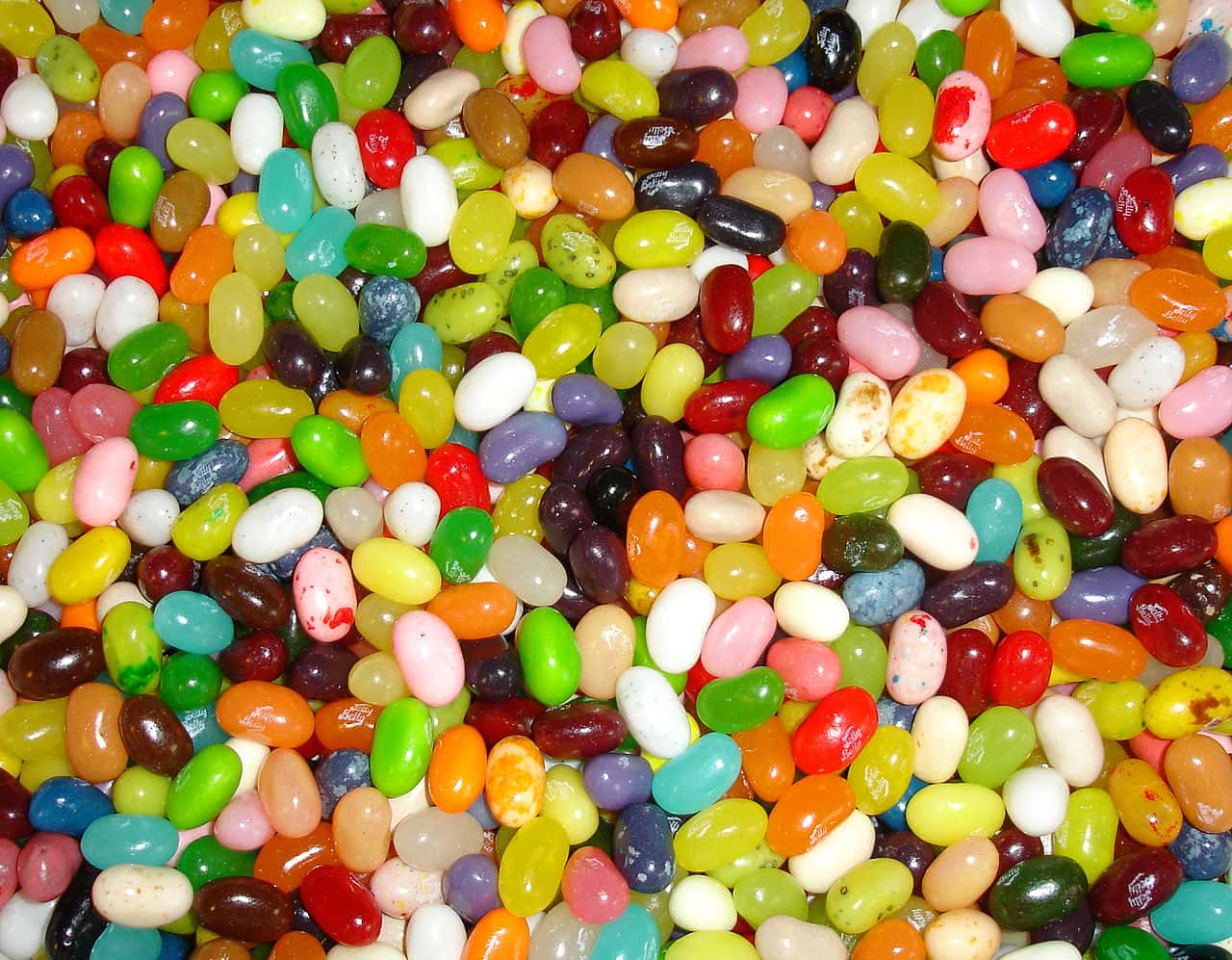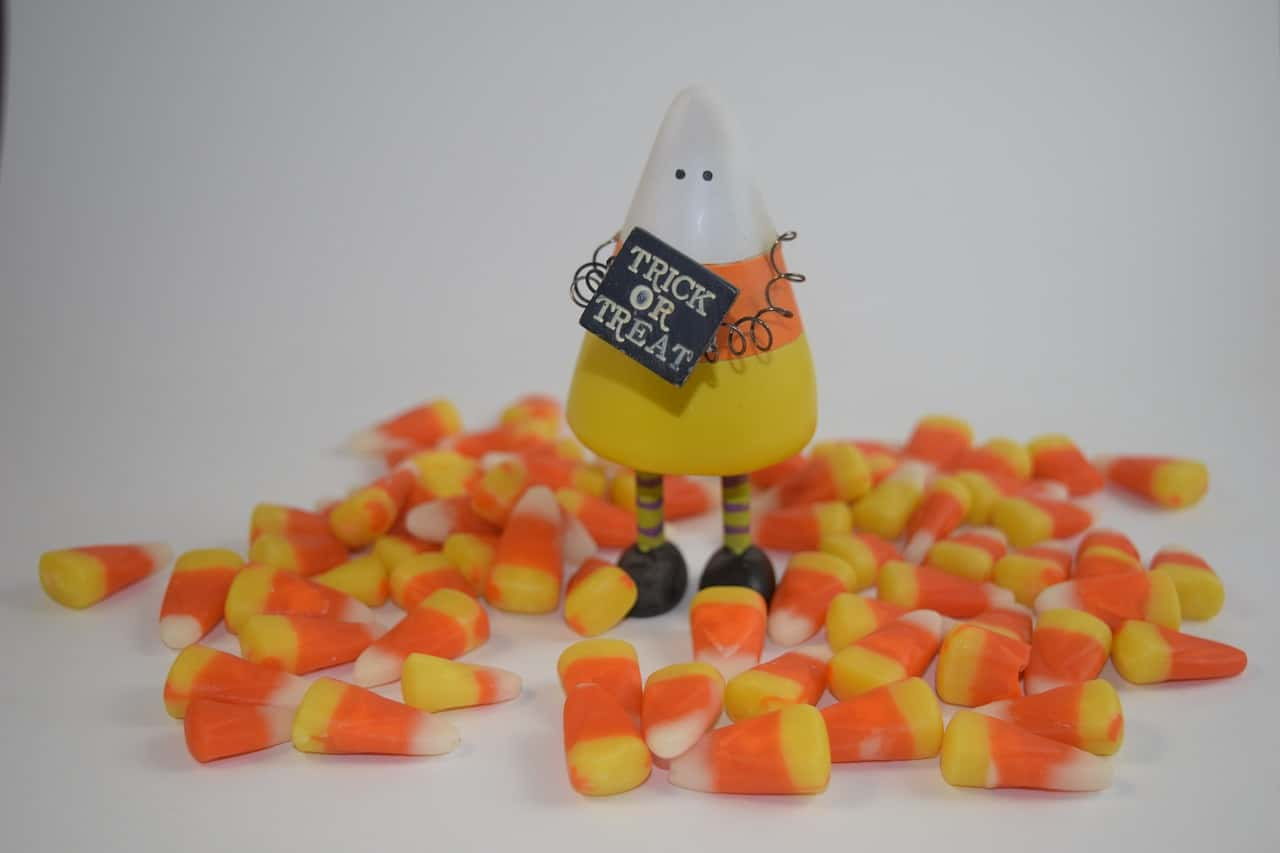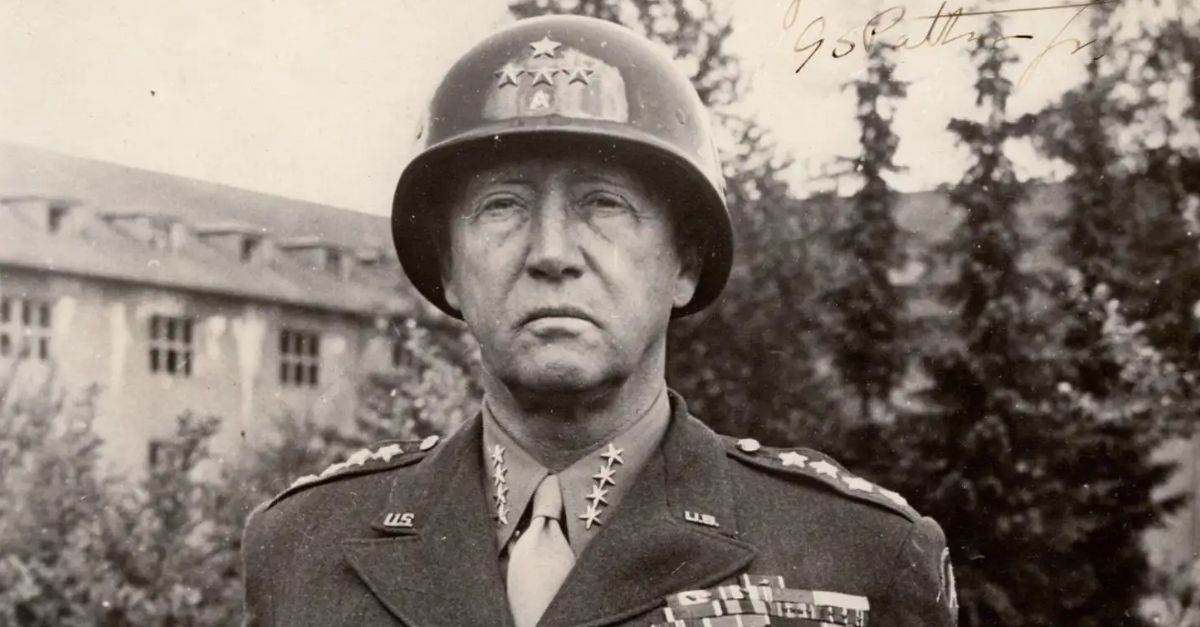"Sugar / Ah, honey honey / You are my candy girl / And you got me wantin' you"—The Archies
Christmas, with all of its candy canes and chocolate Santas, is long behind us. As we wait for Easter’s marshmallow peeps and chocolate bunnies to get us through the long summer before Halloween brings sacks and sacks of treats, here are 45 sweet and delicious facts about your favourite candies and confections.
45. A Rotten Fact
Candy is delightful, but too much can wreak havoc on your teeth—not all candy is equally bad for your chompers though. Bacteria in your mouth feed on sugar and produce harmful plaque, which builds up on teeth. The longer the sugar stays in your mouth, the longer the bacteria have to eat it, so chewy candies that remain in your mouth (or get stuck between your teeth), as well as sour candies with acids that break down tooth enamel, are worst. Dentists recommend brushing after snacking on some of that delicious candy.

44. Never-Ending Tootsie Roll
Tootsie Rolls were created in 1907. According to the official recipe, the previous day’s Tootsie Roll batch is mixed into the new batch each day, so theoretically, this means there’s a tiny amount of the very first Tootsie Rolls in every new roll made today.
43. Drumming Up New Clients
Cotton candy was invented by a dentist of all people. In 1897, dentist William Morrison and his partner, confectioner John C. Wharton, first developed their spun-sugar confection, and it was first shown to a broad audience at the 1904 World’s Fair under the name “Fairy Floss". Eventually, people started to refer to it more commonly as “Cotton Candy,” the name of a competitor’s similar product.
42. Regional Variety
The most popular Halloween candy varies from state to state. Snickers bars are favoured in Oklahoma, Virginia, and New Hampshire, while M&M’s are the top pick in Pennsylvania, North Carolina, and California. Inexplicably, Idaho and Michigan favor candy corn, while Georgia prefers Swedish Fish.
41. Oxymoron
Speaking of Halloween candy, did you ever wonder about “fun size” candy bars? How could less candy be more fun, right? People mostly used to give out full-size candy bars on Halloween, until Mars introduced smaller-sized treats specifically for giving out to trick-or-treaters in 1961. The name “fun size” was coined in 1968, presumably by someone unfamiliar to the concept of fun.
40. How It Began
Trick-or-treaters before the 1930s or 1940s could expect anything from homemade cookies to fruit, nuts, small toys or coins in their Halloween loot bags. Candy wasn’t the common treat given out until the 1950s, when trick-or-treating began to get more popular and people needed a more affordable way to appease the legions of costumed kids appearing at their doors.
39. World of Flavors
Many popular candy bars can be found in different flavors throughout the world. Japan boasts more than 50 different flavors of Kit Kat, from some that sound delicious (blueberry cheesecake, white peach, green tea and apple) to some that really don't (grilled potato, apricot seed, French salt and pumpkin).
38. Rose-Colored Lenses
Kit Kat Chocolatory boutiques in Japan and Korea (which are apparently a thing) have just debuted high priced pink Kit Kats made from rare ruby chocolate in January, 2018. The colorful style of chocolate was invented in 2017 by Swiss chocolatier Barry Callebaut. It gets its rosy color and subtle berry flavor from “ruby” cocoa beans without any added color or flavor. The bar is officially called the Kit Kat Chocolatory Sublime Ruby, and it costs around $3.50. The kicker? They're sold in singles, rather than the traditional sets of four.
37. White Gold
This new ruby chocolate is marketed as the fourth type of chocolate, after milk, dark, and white chocolate, but that's not really accurate. White chocolate isn’t technically chocolate at all, as it doesn’t contain any cocoa solids. It’s instead made from cocoa butter, with added sugar and flavor (often milk and vanilla).
36. Mmmmm!
M&M's candies are named after their founders. The two Ms stand for Forrest Mars (yes, the Mars bar is named after him too) and Bruce Murrie, who invented the candies in 1941.
35. Variety
M&M's are often known in their original chocolate form, plus peanut, peanut-butter, and crispy varieties. But on top of those, the candies are occasionally sold in special limited-edition flavors as well: if you’re lucky, you might find a pack of pecan pie, peanut butter, pumpkin spice latte, pretzel, white cheesecake, coffee nut, dark mint or caramel M&M's.
34. A Rose By Any Other Name…
If you live in the United States, you’d probably recognize the rolls of pressed-sugar confections wrapped in tubes of cellophane, and you’d call them Smarties. However, if you asked for Smarties in Canada you’d be given a box of candy-coated chocolate discs (similar to M&M's). Canadians call the little candy tablets Rockets. And to make matters worse, Canadians searching for candy in the UK need to take heed—in Europe, “rocket” is the common name for arugula.
33. Life Saving
Life Savers mints debuted in 1912 as a “summer candy:” a candy intended to withstand the heat of summer better than chocolate, which melts. Clarence Crane, the candy’s inventor, noticed a machine in a pharmacy used to manufacture pills, and realized he could use it to make round-shaped mints. By 1919, the candies were available in six flavors: Wint-O-Green, Cl-O-Ve, Lic-O-Rice, Cinn-O-Mon, Vi-O-Let and Choc-O-Late.
32. An American Classic
Necco Wafers were first produced in 1847 by the New England Confectionary Company (thus the acronym). The deliciously sweet discs are packaged in wax-paper rolls and featured an assortment of eight flavors: licorice (black), lemon (yellow), clove (purple), chocolate (brown), wintergreen (pink), cinnamon (white), lime (green), and orange (orange). That's right, people today are still eating clove flavored candy.
31. Going Natural
Many candy companies are eliminating artificial colors and flavors, even from their most famous and iconic candies. Necco wafers dropped the lime flavor in 2009 when they transitioned to all-natural colors, as natural green coloring was deemed too difficult to manufacture. The candies now come in seven-flavor rolls. Sorry, lime lovers.
30. A Sweeter World
Every day, 64 million Tootsie Rolls are made. That’s over 44,440 Tootsie Rolls per minute.
29. How Many Licks?
According to Tootsie’s website, the age-old question, “How many licks does it take to reach the center of a Tootsie Pop?” is no longer rhetorical, but the answer can vary. A group of students at Purdue University found that an automatic licking machine (based on a human tongue) took an average of 364 licks to reach the center. Their human subjects averaged only 252 licks. Meanwhile, students at Swarthmore Junior High recorded only 144 necessary licks.
28. The Science Behind It
Candy and soda pop aren’t great for us, but they’re harmless in small amounts. However, seeing the aftermath of a Mentos candy mint dropped in a bottle of Coca-Cola might give you pause. The mints cause a furious explosion of fizzy soda to spurt out of the bottle once dropped in. Despite how spectacular the event can be, it's not caused by anything harmful at all, and isn’t even a chemical reaction. Due to a physical process called nucleation, the dissolved carbon dioxide gas in soda forms bubbles on any surface it can grab onto. Mentos are sprayed with 40 microscopic layers of sugar, which means it has millions of tiny nucleation sites, which means lots and lots of bubbles. The bubbles rapidly form on the Mentos and fizz comes spurting out of the small bottle opening, creating a sweet, fizzy soda geyser. The Mentos reaction might be a bit dramatic, but in fact any candy dropped into any soda will create a bit of fizz, all because of nucleation.
27. Candy and Toys
Original PEZ mints were sold in paper-wrapped rolls. The signature dispensers were sold without heads. In 1955, PEZ debuted the comical toy heads on their dispensers and began marketing their candies to children.
26. Candy Collectibles
Since 1950, over 1500 different PEZ dispensers have been created. The Santa PEZ dispenser, which debuted in 1955, remains one of the most popular, though Star Wars PEZ dispensers were also a huge hit. The rarest PEZ dispenser is a 1982 World’s Fair dispenser, one of only two created, which is valued at $32,000 (though this final auction sale price is unverified). A Political Donkey PEZ dispenser owned by JFK is valued at $13,000.
25. Sugar On A Stick
Lollipops first appeared in the Middle Ages, when the nobility would munch on boiled sugar from a stick or handle. Modern lollipops were first sold in 1908 by George Smith, who named the treat “Lollipop” after a beloved racehorse. These candies have also been promoted as an alternative to bad habits. Chupa Chups lollipops have been marketed using the slogan "Enjoy Chupa Chups," with black warning labels on the packaging that mimic hazard warnings, stating "Sucking doesn't harm".
24. Number One Fan
Jelly Belly jelly beans had a very famous fan: US President Ronald Reagan. He loved eating them so much that Air Force One was outfitted with special jelly bean holders, lest turbulence cause his beloved beans to spill. For Reagan’s inauguration, Jelly Belly sent him a shipment of “patriotic” beans—red (cherry) and white (coconut) beans, with a newly-invented blue (blueberry) bean created specially to complete the red-white-and-blue color scheme.
23. Lots to Love
It’s no wonder that Ronald Reagan loved Jelly Bellys so much—the gourmet beans come in more than 50 varieties, from watermelon to margarita to popcorn, so there’s a Jelly Belly flavor for every occasion. The beans also come in limited-edition flavors, such as Tabasco sauce,eggnogg, and pancakes & syrup.
 Wikimedia Commons, Brandon Dilbeck
Wikimedia Commons, Brandon Dilbeck
22. Every Flavour Beans
In her Harry Potter series, J.K. Rowling created a candy called Bertie Bott’s Every Flavour Beans, no doubt inspired by the panoply of Jelly Belly flavors. Bott’s fictional jelly beans came in quite literally every flavor, from a variety of delicious ones to some that were rather unpleasant: skunk spray, vomit, earwax and rotten egg. Jelly Belly created a real-life version of the beans as a promotion, and of course manufactured the gross-out flavors. They’ve since abandoned the Harry Potter connection and paired the icky beans with identical-looking “normal” flavors, under the name “BeanBoozled". Feeling lucky, punk?
21. Energy Beans
Some of us go to the gym to work off calories from candy we’ve eaten, but if you want to work off the calories as you eat them, Jelly Belly has you covered. Their line of “sport beans” are designed to provide extra energy—the beans contain carbohydrates, electolytes (in the form of sodium and potassium), plus vitamins B1, B2, B3, and vitamin C. “Extreme Sport Beans” also boost your energy with aded caffeine.
20. High Praise
The President of the United State may have favored Jelly Bellys, but M&M's have fans even higher up—literally. M&M's are the most commonly requested candy by astronauts on space missions. Because they’re bite-sized and candy-coated, they don’t pose much risk of making a mess. They can also be let loose in zero gravity and gobbled up, Pac Man-style by the astronauts.
19. Too Much!
Theoretically, one can reach their end due to excessive chocolate. According to the American Chemical Society, eating 262 fun-sized Halloween candy bars at once would poison a 180-pound person. But don't be overly concerned—your body would reject, or in other words, throw up, that much chocolate way before it became lethal to you.
18. Real Dangers
Chocolate may be a delicious—and fairly safe—treat for you, but it isn’t for your pet. Chocolate (as well as tea, cola, and açaí berries) contains a compound called theobromine, which is poisonous to your pooch. It’s important to keep your dog (especially small dogs) away from all chocolate, and to see a vet if Rover gets into the Hershey. The type of chocolate and the size of the dog will determine the toxicity—1/2 an ounce of baker’s or dark chocolate or 3.5 ounces of milk chocolate is enough to make a 10-pound dog sick.
17. No Laughing Matter
Snickers candy bars were created in 1930 by candy magnate Franklin Mars, founder of the Mars candy company and father of Forrest Mars, the inventor of M&M's. The senior Mars had a custom of attributing his creations with names from his life: Snickers was a cherished racehorse at the family ranch in Tennessee, named Milky Way, who unfortunately is no longer with us.
16. Old Timey Candy
During the Victorian era, access to refined sugar became more common and more affordable. Many confections that were formerly medicinal, such as lozenges, were gradually changed from medicines into sweet candies like lemon drops and licorice humbugs. The more delicious these things became, the more desirable they were to the general population and to children. Popular Victorian confections included comfits (sugar coated nuts), confits (candied fruit), sugarplums (small round hard candies), bonbons (chocolates) and sweetmeats (sweet nutty candies or pastries).
15. One Musketeer
Sometimes chocolate bar names are a bit inscrutable—there’s no apparent reference to the work of Alexandre Dumas on the 3 Musketeers bar label, but it made sense, once. When the bars debuted in 1930, the package contained three pieces of candy in three flavors: chocolate, vanilla, and strawberry.Rations enforced during WWII escalated the production costs of candy bars, causing the elimination of vanilla and strawberry flavors and retaining only the chocolate. However, naming it "One Musketeer" didn't sound as appealing.
14. Christmas Treats
If you thought that Halloween was the hottest time of the year for candy consumption, you’d have the wrong holiday. Christmastime is actually the biggest season for candy sales. Over 2 billion candy canes are manufactured each year.
13. Long Tradition
According to legend, candy canes date back to 1670, when a German choirmaster commissioned candy sticks to quiet the children during church services. In order to justify giving them candy in church, he asked they be made into a crook shape, reminiscent of the shepherds who visited the baby Jesus.
12. Thank Fry!
The first chocolate bar was manufactured in 1847 by Fry’s, a company out of Bristol in England. Fry’s began mass-producing the bars in 1866 and sold them as “Fry’s Chocolate Cream". The bars consisted of a minty fondant center covered in milk chocolate. Fry’s Chocolate Cream bars are still manufactured, but today they’re made by Cadbury.
11. Useful Candies
Tootsie Rolls also served as a lifesaver for certain individuals during the Korean conflict. When a contingent, which was surrounded by enemy forces, radioed for "tootsie rolls" - a codename for mortar shells - they were disappointed when the actual candy was delivered instead. However, they realized the chewed-up sticky toffee could be used to patch holes in their vehicles’ fuel lines, allowing them to safely escape.
10. Explosive Treat
Pop rocks were invented by accident in 1956 by William A. Mitchell, a chemist experimenting on manufacturing an “instant” soda. The candy is essentially carbon dioxide dissolved in sugar—when the sugar melts on your tongue, the carbon dioxide “crackles” as it’s released—the same mechanism that makes soda fizzy. Mitchell also invented Tang, Cool Whip, and Jell-O—what a guy!
9. The Longest Peep
Marshmallow peeps, those fluffy yellow marshmallow chicks so ubiquitous at Easter, were acquired by the Just Born candy company in 1953. Previous to that, the little fluffs were hand-made and took 27 hours to set. Bob Born, son of Just Born’s founder, invented a machine known as The Depositor that cut that time down to just six minutes. Every year, Just Born makes enough peeps to circle the earth twice.
8. Literary Inspiration
J.K. Rowling’s Every Flavour Beans weren’t the first candy to jump from literature to reality. When Roald Dahl’s Charlie and the Chocolate Factory was being made into a film, Quaker Oats was tapped to help finance it. In return, Quaker launched a candy brand called Willy Wonka, and brought some of the fictional treats in the book to life, including Everlasting Gobstoppers and Laffy Taffy. The brand also dreamed up some new products, like the fruit-shaped Runts.
7. Life-Saving Candy
No, we’re not talking about Life Savers again, we mean Tootsie Rolls. Tootsie Rolls were included in soldier’s rations during WWII, to give them a little boost of energy. The candies were also ideal as they didn’t melt or spoil. In fact, a downed pilot lost in the Sahara desert managed to survive for three days on Tootsie Rolls.
6. What Are You Really Craving?
Most people have heard that chocolate can have benefits in the bedroom, but we never knew the whole story until a recent study. The problem is, the study seems flawed. While women who consumed chocolate daily did register higher scores on the "Female Function Index," these same women were slightly younger than the group of women who didn't consume chocolate. So if this is really a concern of yours, you can always err on the side of caution and treat yourself to a few squares of the good stuff.
5. Good Enough For Plants
Clorets gum is so named because they contain chloropyl—the same chlorophyll that makes plants green. Chlorophyll has a minty flavor and is thought to be exceptional at eliminating bad breath and other odors from elsewhere in the body. In the 1950s, the ingredient was so sought after that it was incorporated in mouthwash, dog biscuits, and even toilet paper. Strikingly, only gum seems to have maintained its popularity over the years.
4. How Rude!
Those living in the UK a few decades ago wouldn’t have seen a Snickers bar anywhere—but they could buy the same treat under the name “Marathon Bar". That’s because the name “Snickers” was thought to be too indecent, as it rhymes with “knickers,” a British slang word for women’s underwear. The UK name was changed to Snickers in 1990.
3. Every Part Utilized
If you snap open a Kit Kat, you’ll find layers of wafer and chocolate, right? Wrong. The filling isn’t actually pure chocolate—it's really mashed-up Kit Kats. While going through the quality-assurance process, any imperfect Kit Kat bars (with off-center wafers, or not enough shine) are pulled off the line and ground into a paste, which is used to manufacture more perfect Kit Kat bars!
2. Makes Sense
The name PEZ comes from the first, middle and last letter of the German word for peppermint, pfefferminz. The mints were first developed as a solution for those used to inhaling substances, and their slogan in 1920 stated: "Inhalation activity forbidden, PEZing acceptable".
1. True Blue
In the quest for all-natural food colorings, natural blue dye has stymied food scientists more than any other color. Scientists at the Mars research laboratory are experimenting with dyes made from algae, roots, and seeds, but still have yet to come up with a color that both looks appealing… and doesn’t taste like algae.
Sources: 1, 2, 3, 4, 5, 6, 7, 8, 9, 10, 11, 12, 13, 14, 15, 16, 17, 18, 19, 20, 21, 22, 23, 24, 25, 26, 27, 28, 29, 30, 31, 32, 33, 34, 35, 36, 37, 38, 39, 40, 41, 42


















































